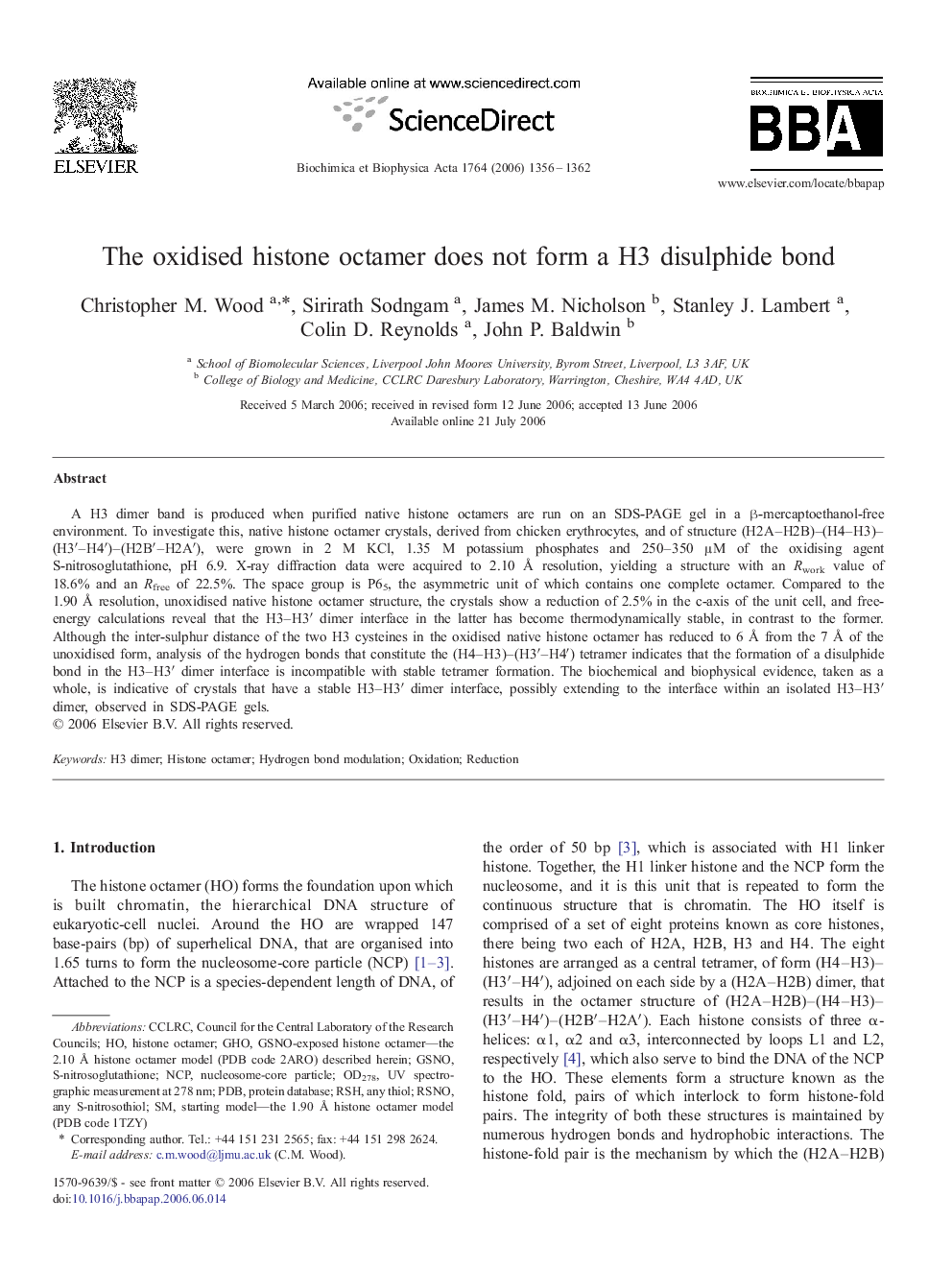| Article ID | Journal | Published Year | Pages | File Type |
|---|---|---|---|---|
| 1179574 | Biochimica et Biophysica Acta (BBA) - Proteins and Proteomics | 2006 | 7 Pages |
A H3 dimer band is produced when purified native histone octamers are run on an SDS-PAGE gel in a β-mercaptoethanol-free environment. To investigate this, native histone octamer crystals, derived from chicken erythrocytes, and of structure (H2A–H2B)–(H4–H3)–(H3′–H4′)–(H2B′–H2A′), were grown in 2 M KCl, 1.35 M potassium phosphates and 250–350 μM of the oxidising agent S-nitrosoglutathione, pH 6.9. X-ray diffraction data were acquired to 2.10 Å resolution, yielding a structure with an Rwork value of 18.6% and an Rfree of 22.5%. The space group is P65, the asymmetric unit of which contains one complete octamer. Compared to the 1.90 Å resolution, unoxidised native histone octamer structure, the crystals show a reduction of 2.5% in the c-axis of the unit cell, and free-energy calculations reveal that the H3–H3′ dimer interface in the latter has become thermodynamically stable, in contrast to the former. Although the inter-sulphur distance of the two H3 cysteines in the oxidised native histone octamer has reduced to 6 Å from the 7 Å of the unoxidised form, analysis of the hydrogen bonds that constitute the (H4–H3)–(H3′–H4′) tetramer indicates that the formation of a disulphide bond in the H3–H3′ dimer interface is incompatible with stable tetramer formation. The biochemical and biophysical evidence, taken as a whole, is indicative of crystals that have a stable H3–H3′ dimer interface, possibly extending to the interface within an isolated H3–H3′ dimer, observed in SDS-PAGE gels.
